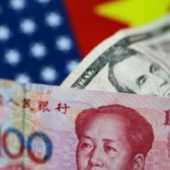
Investing.com — prices have plunged in the aftermath of the recent U.S. elections, with the market witnessing its worst post-election week since 1980.
The yellow metal’s value dropped 6% in a single week, a sharp decline attributed to a confluence of factors, according to UBS analysts.
The dramatic sell-off followed the election, which saw heightened expectations for U.S. economic growth and tighter monetary policy, leading to a surge in the U.S. dollar and a corresponding rise in long-term bond yields.
UBS strategists say that this precipitous decline can be understood through three critical developments. Firstly, the spread between U.S. high-yield credit rates tightened significantly, and the (VIX) fell to its lowest since July.
These shifts indicate a diminishing demand for safe-haven assets like gold as investor confidence in the U.S. economic outlook improved.
Secondly, the U.S. dollar’s rally—spurred by strong economic data and expectations of fiscal stimulus under the new administration—created a headwind for gold, which traditionally has an inverse relationship with the greenback.
Lastly, rising U.S. interest rates, tied to expectations of inflationary policies, further undermined gold’s appeal.
Despite the near-term pessimism, UBS maintains a longer-term bullish outlook on gold, suggesting that ongoing geopolitical uncertainties and dedollarization trends among central banks could reignite demand.
The brokerage projects an end-2025 target of $2,900 per ounce, underscoring its confidence in the metal’s resilience amid a volatile economic backdrop.
For investors, UBS recommends a tactical approach, advising that dips in the gold market offer strategic buying opportunities, particularly as the price nears the $2,500 support level.
They suggest maintaining a 5% allocation to gold in a balanced portfolio as a hedge against potential economic disruptions.
This fall marks a stark contrast to pre-election forecasts, where gold was expected to perform well regardless of the electoral outcome.
However, as the dollar gains on “U.S. growth exceptionalism” rather than “risk-off” sentiment, gold’s traditional safe-haven status has been temporarily eclipsed.


















